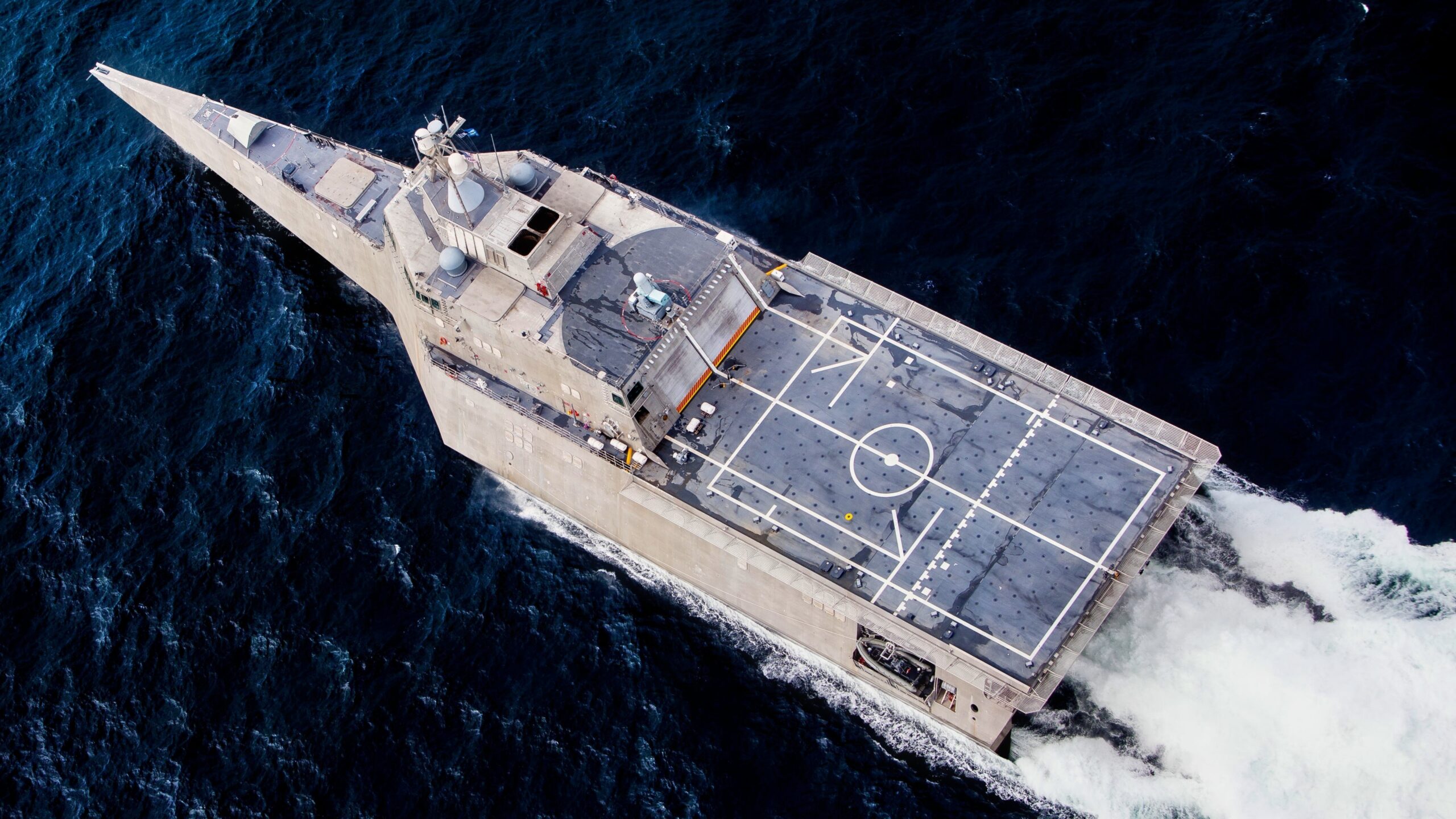The US Navy currently has 238 active combat warships, 50 of which are in reserve. The sea service is building another 50 warships, and 36 more are on order. This is the smallest number since the fleet stood at 245 ships in 1916.
While fleet size has fluctuated significantly throughout history, topping out at a whopping 6,768 ships during World War II, today’s Navy is only slightly smaller than it was in 2006 under President George W. Bush, when it employed 281 active vessels. Under President Reagan, the Navy had 597 ships in the fleet.
US Navy: Does Size Matter? Some Say No
Meanwhile, the Chinese now have 370 surface ships and submarines, 140 of which are considered major surface vessels. But some critics say it isn’t the size of the fleet that matters, but its composition. That has been a counterpoint to the size of the fleet equation for more than a decade.
Gregg Easterbrook, a journalist who tracked fiscal policy and military strategy for Reuters, stated in 2015 that the Navy is strong enough.
“The U.S. Navy is 10 times stronger than all of the other world’s navies combined,” Easterbrook said. “To say that the Navy is weak because the numbers are going down is classic political nonsense.”
But even then, the Navy overtaxed its fleets to meet constant demand worldwide. With China’s Navy even larger and considered almost technologically on par, those numbers matter greatly.
Shipyards Are In Bad Shape
China has 13 shipyards, while the US had eight public naval shipyards when the Soviet Union collapsed in 1991. Today, there are only four. Some estimates put Chinese ship-building capacity at 232 times that of the US.
Through staggeringly poor forward-thinking, the US allowed its commercial shipyards to atrophy because it mistakenly thought they wouldn’t be needed. Only two of the US’s shipyards can build nuclear submarines. US nuclear submarines are one dynamic where the US still has a clear numerical and technological advantage.
But our shipyards can only possibly crank out one submarine a year. That isn’t going to get it done. The Navy plans to double that by 2027. That number is still too low, but at least it is moving upward.
In the post-Cold War years, the US got tied up and distracted by fighting high-intensity, low-tech wars in Afghanistan and Iraq, and no one looked forward.
It was a catastrophic mistake. Our shipyards are a shadow of what they once were. During the incredible days of World War II, the “Arsenal of Democracy” cranked out a new destroyer every 17 days.
Overstretched with Tasks
Right now, the focus is on China and the Indo-Pacific. The Navy has also been overtaxed in trying to keep up with the constant aggressiveness of the Chinese Navy and Coast Guard.
The Navy struggles to maintain the high operational tempo (OPTEMPO) required to counter threats in various regions, leading to stretched resources and crew fatigue.
Besides the Indo-Pacific, there are ongoing actions in the Red Sea, where Iranian proxies, the Houthis, are attacking commercial shipping and US Navy ships by using Iranian and Russian-supplied missiles.
The Russian Navy constantly pushes the Mediterranean, Black Seas, and Arctic boundaries. That is why President Trump is so adamant about Greenland.
And North Korea is an area close to allies Japan and South Korea that bears close watching.
The Navy now finds itself stretched dangerously thin.
Its fleet is overextended, trying to meet the demands of relentless presence with fewer ships. The strain is visible—and troubling. Today, the Navy is not sized to sustain the operational pace required to match the PLAN (Chinese Navy) in its backyard.
Congress commissioned the report “Fighting Culture of the Navy’s Surface Fleet,” which found the Navy still “too small to accomplish all the missions with which senior civilian leaders and combatant commanders task it.”
The Navy is too small to meet all of its taskings, but until its shipyards get back in shape, it must do what it can to keep deterrence from allowing China to swallow up its neighbors piecemeal.
US Navy Littoral Combat Ship: A Photo Essay
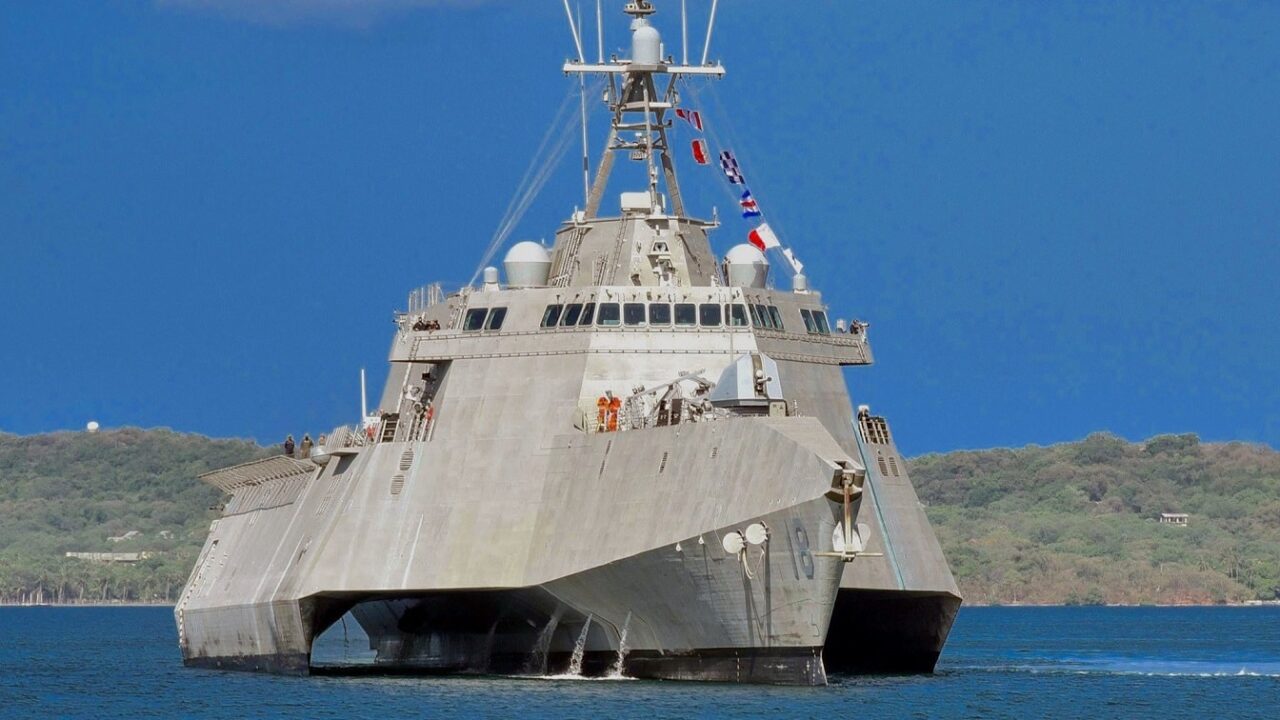
Littoral Combat Ship. Image Credit: US Navy.
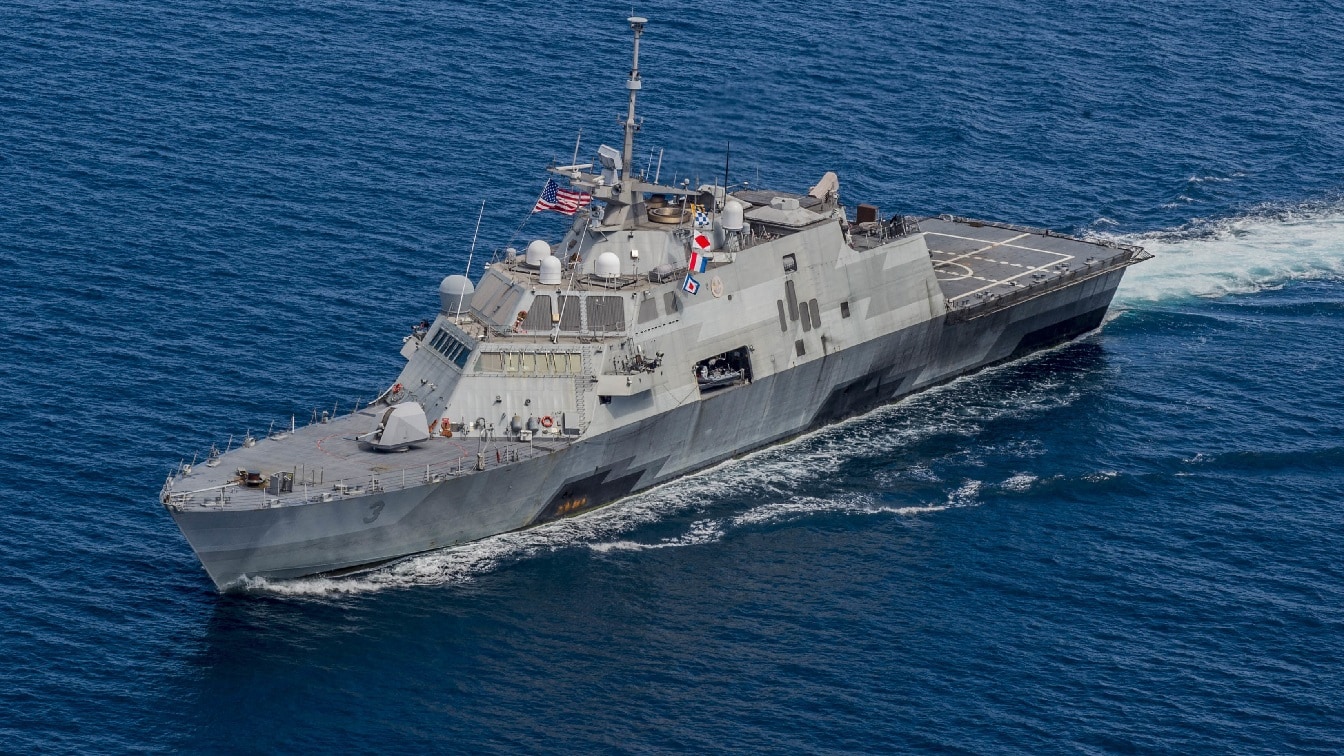
(Aug. 19, 2015) The littoral combat ship USS Fort Worth (LCS 3) assembles in formation with ships from the Royal Malaysian Navy as part of Cooperation Afloat Readiness and Training (CARAT) Malaysia 2015. CARAT is an annual, bilateral exercise series with the U.S. Navy, U.S. Marine Corps and the armed forces of nine partner nations. (U.S. Navy photo by Mass Communication Specialist 2nd Class Joe Bishop/Released)
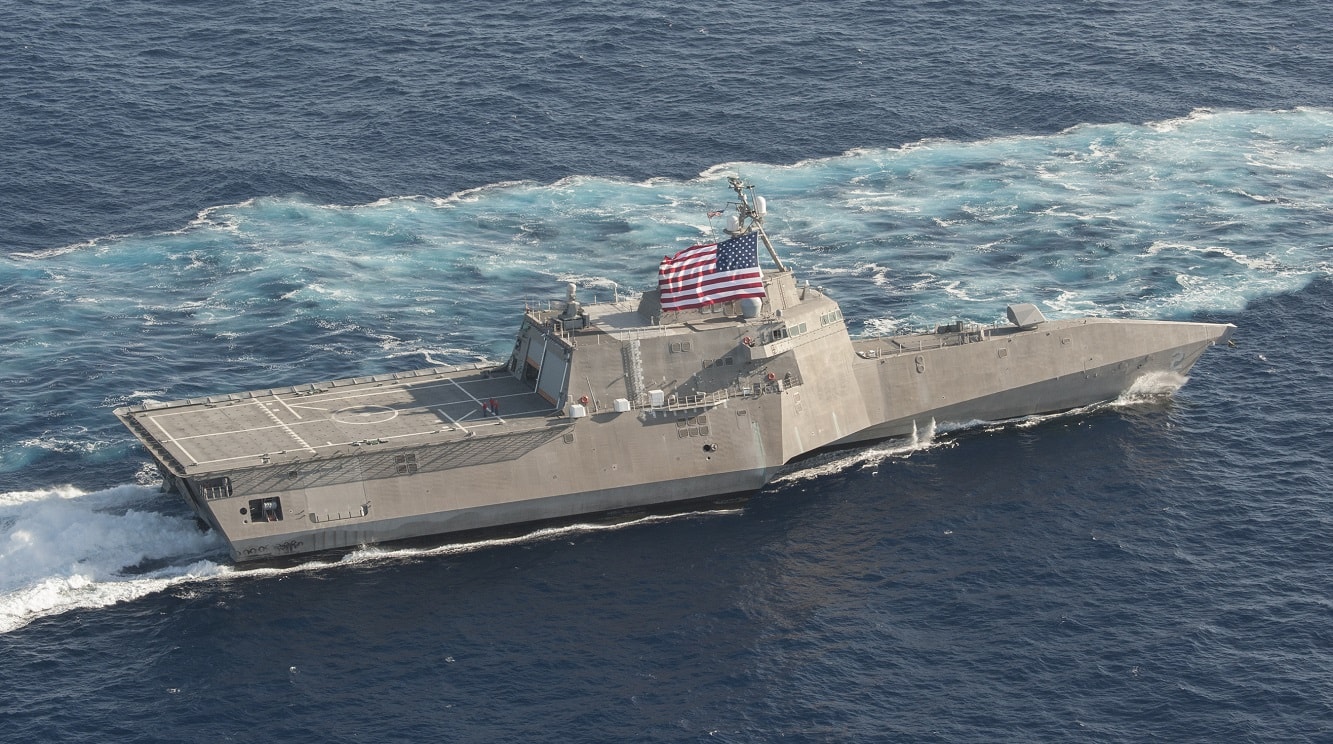
The littoral combat ship USS Independence (LCS 2) is underway in the Pacific Ocean. (U.S. Navy photo by Chief Mass Communication Specialist Keith DeVinney/Released)

PHILIPPINE SEA (Oct. 1, 2019) Independence-variant littoral combat ship USS Gabrielle Giffords (LCS 10) launches a Naval Strike Missile (NSM) during exercise Pacific Griffin. The NSM is a long-range, precision strike weapon that is designed to find and destroy enemy ships. Pacific Griffin is a biennial exercise conducted in the waters near Guam aimed at enhancing combined proficiency at sea while strengthening relationships between the U.S. and Republic of Singapore navies. (U.S. Navy photo by Chief Mass Communication Specialist Shannon Renfroe/Released)
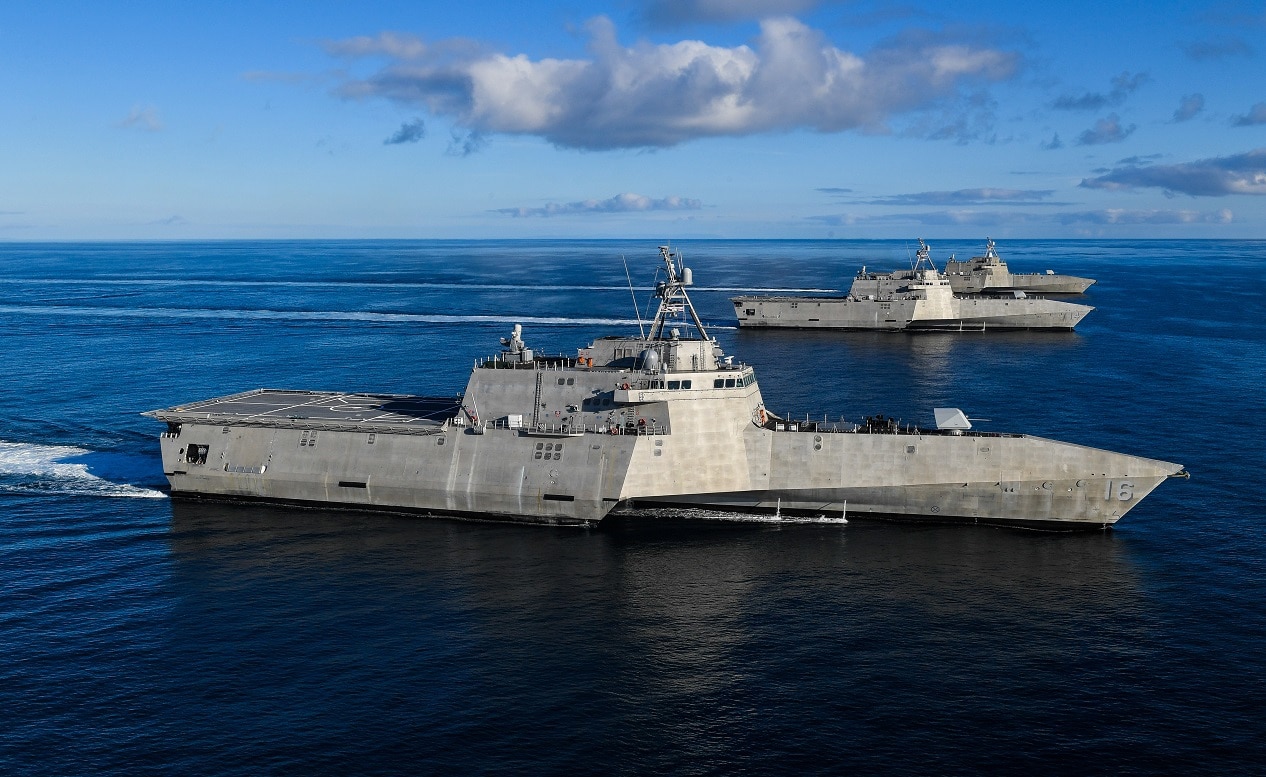
The Independence variant littoral combat ships USS Tulsa (LCS 16), right, USS Manchester (LCS 14), center, and USS Independence (LCS 2), left, sail in formation in the eastern Pacific. LCS are high-speed, agile, shallow draft, mission-focused surface combatants designed for operations in the littoral environment, yet fully capable of open ocean operations. As part of the surface fleet, LCS has the ability to counter and outpace evolving threats independently or within a network of surface combatants. (U.S. Navy photo by Chief Mass Communication Specialist Shannon Renfroe/Released)
About the Author: Steve Balestrieri
Steve Balestrieri is a 19FortyFive National Security Columnist. He served as a US Army Special Forces NCO and Warrant Officer. In addition to writing for 19FortyFive, he covers the NFL for PatsFans.com and is a member of the Pro Football Writers of America (PFWA). His work was regularly featured in many military publications

